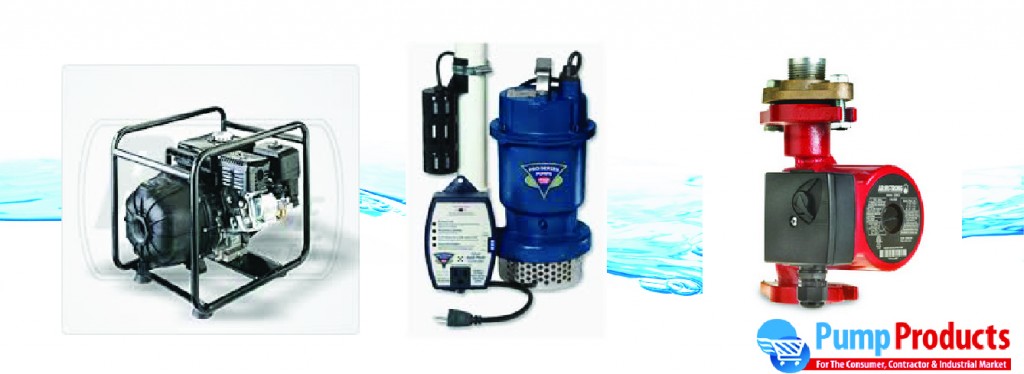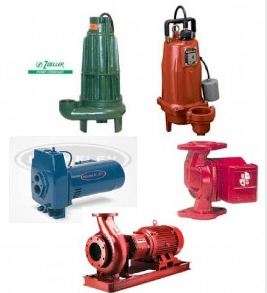-
Pump Products Gears Up For the Market
May 30, 2013Set to launch in September 2013, on-line pump supplier PumpProducts.com has created an inventory of pumps, motors and generators characterized by heavy-duty design, high performance and versatility. The new e-commerce site's offerings reflect the changing demands of the residential and light commercial pump markets. In addition to the leading consumer pumps offered by big-box stores, including models by Armstrong, Taco, Berkeley and Grundfos, Pump Products will offer customers a variety of gas-powered pumps traditionally used in commercial and industrial applications. Prior to 2011, engine driven pumps fueled by gas or diesel were largely limited to agricultural and construction applications. In the aftermath of Hurricanes Irene and Sandy, diesel and gas-powered pumps have become a growing segment of the pump market because they can pump large volumes of water in areas with no power. (more…)
-
PUMP BUYERS GUIDE
February 6, 2013Because they tend to operate out of sight, the pumps we use every day often go unnoticed. It isn't until we experience a breakdown and need to replace a pump that’s necessary to wash clothes, heat our home or drain a flooded basement that most of us realize how little we know about pumps and how to evaluate them. KEY TERMS TO UNDERSTAND WHEN CHOOSING A PUMP PUMP SPECIFICATIONS PRESSURE - The force delivered at a given point in a pump’s discharge line, usually measured in pounds per square inch (psi). LIFT - The number of feet that fluid needs to be lifted for removal. Correctly sizing a pump for lift is important for that pump's longevity and energy efficiency. HEAD - The height at which a pump can no longer exert enough pressure to move water. The higher the head pressure, the more powerful a pump is. FLOW - The volume of liquid a pump can move. The objective is to achieve the best possible balance between the size of the outflow pipe and the speed at which you want fluid to flow through it. POWER SOURCES When choosing a pump it's important to consider your energy source. Most pumps are manufactured to run on one of the following power sources: Electricity - The vast majority of pumps are electrically powered. Gasoline - Gas-powered pumps are often portable and employed in situations where electrical power has failed or is absent. Diesel - Applied much as gas-powered pumps are, though diesel fuel generally offers better fuel efficiency than gas. Water - Water powered pumps run on a home or municipal water supply and will operate as needed for an unlimited amount of time. Compressed Air - Air operated pumps are positive displacement pumps driven by compressed air. They are used in a wide range of applications. Sunlight - Solar powered pumps are ideal for sunny areas. They are clean, energy efficient and usually require very little maintenance. MATERIALS The life of a pump depends on the ability of the materials it is made from to withstand the demands of the pumping environment. Pumps are available in a variety of materials suited to varied conditions: Metals (bronze, cast iron, stainless steel) are a commonly used for pumps that operate in conditions requiring durability, resistance to high temperatures or abrasive resistance. Non-metals (thermoplastics, composites) are useful for applications requiring chemical or corrosion resistance. PUMP TYPES After you determine the pressure, lift, head and flow demands you will be putting on a pump, you can choose from a variety of configurations suited to different applications. Submersible Pumps are designed to work while immersed in the fluid they are moving. A sump pump is a common type of submersible pump, as are grinder and shredder pumps. Centrifugal Pumps employ an impeller to push liquids out through a system. A recirculating pump used to speed hot water to a kitchen sink or showerhead is an example of a centrifugal pump. Diaphragm Pumps house a membrane that undulates to create steady, consistent flow. The engine-driven trash pumps commonly used to remove mud, sewage and wastewater in municipal and industrial settings are often diaphragm pumps. Once performance and configuration demands are determined, you must decide on the best type of pump for your application. Click here for a comprehensive listing of common types of pumps currently on the market. Most pump manufacturers produce popular types of pumps with special features that make them especially well-suited to various conditions. SPECIAL FEATURES Self-Priming pumps require no manual supplying of fluid to the pumping chamber and are therefore easy to maintain and convenient to operate. They are ideal for tight spaces and other applications in which access is difficult or inconvenient. Adjustable Speed increases a pump's efficiency by making it adaptable to an application's changing demands. Variable speed pumps are a good choice for applications such as starter homes, which are prone to expanding performance demands. Battery Back-ups provide emergency power in the event of a power outage. Most commonly associated with sump pumps, battery backup systems are a form of low cost insurance in flood-prone applications. Alarms are designed to sound an alert when water reaches a problematic level or a pump stops working. An alarm lets you know when you should service your pump. Corrosion Resistance helps to extend the life of a pump. If a pump is placed in or around water, or moves hot or abrasive liquids, corrosion resistant construction, such as stainless steel housing and high temperature seals, will enable it to run longer and require less maintenance. These are the basics when it comes to choosing the right pump. For detailed specs, manuals and reviews on hundreds of quality pumps by top-brand manufacturers explore the many interactive pages on PumpProducts.com. For detailed specs, manuals and reviews on the pumps, pump parts and accessories we stock and ship nationally, log on to our product pages at www.pumpproducts.com or call us for details: 1-800-429-0800.







